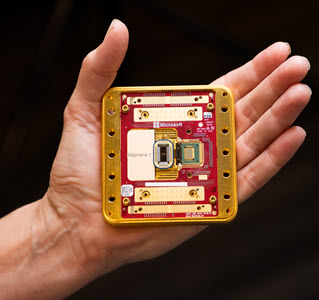No, this week we will not be discussing Romulus and Remus who founded Rome, but instead the first two dire wolf pups on Earth in the last 10,000 years. Recently, a company called Colossal Biosciences has genetically engineered gray wolf DNA to de-extinct the first animal ever — the dire wolf. A dire wolf was a large wolf that used to roam North and South America from the Late Pleistocene to the Early Holocene. These wolves were larger and stronger than modern gray wolves, but shared much of the same genetic code.
Colossal Biosciences began by sequencing dire wolf DNA from fossils. With this, they compared the dire wolf DNA to gray wolf DNA and identified genetic differences. After identifying these differences, they isolated endothelial progenitor cells (a type of stem cell) from the blood of gray wolves. By isolating these cells, they were able to use CRISPR gene editing to modify genes for specific traits found in dire wolves. With this, the modified genes were implanted into egg cells which became Romulus and Remus, the dire wolf pups. Once Romulus and Remus developed into embryos, they were implanted in domestic dog surrogate mothers.
While gene editing is not a new technology, gene editing on this scale is novel, as Romulus and Remus are the very first example of de-extinction. While the process of reviving these extinct animals seems understandable, modifying a single gene is difficult, so modifying multiple genes for multiple traits is a lengthy and expensive process. Romulus and Remus are acting as a catalyst for other extinct animals coming back from the dead.
While the science behind Romulus and Remus is undoubtedly fascinating, the reintroduction of extinct animals may not be the most environmentally friendly process. Introducing animals which have been extinct from the Earth for thousands of years into ecosystems which have evolved without them could be equivalent to introducing an invasive species. With this, the goal of Colossal is not necessarily to send these genetically modified extinct creatures into the wild, but a breach could put our ecosystems into a Jurassic-Park-like situation as they continue to de-extinct more animals.
In all, the science behind the de-extinction of an animal has been discovered and the process has been completed. This will only bring rise to more animals being revived, and will bring major attention to the ethicality of the practice. Will genetically modified cells be continually used to bring extinct animals back, or are Romulus and Remus an exception? While this cannot be answered now, as gene editing technology continues to develop in the coming years, a definite yes or no can most definitely be found.














